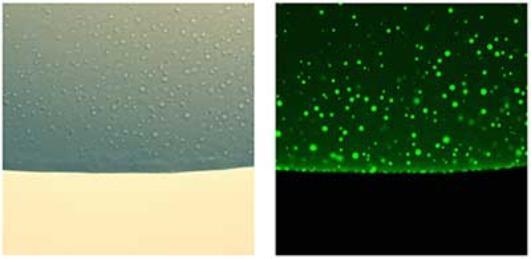Dr Michael Plevin
Senior Lecturer and Royal Society Industry Fellow
Research
My research addresses mechanisms of biomolecular recognition and the structural and chemical features that define interaction surfaces of proteins and nucleic acids. Within this broad subject area, I have a particular interest in molecular recognition by multi-domain proteins, considering both the interactions mediated by structured domains and the roles of the flexible regions that link these domains.
A major research focus is the design and engineering of proteins for industrial applications. We use our knowledge of protein structure and function and expertise in structural biology, biophysics and biochemistry to generate proteins that address industrial questions. We combine rational, phage display and computational approaches to generate synthetic proteins. Current projects in this area involve development of novel non-antibody scaffolds, recombinant protein tags and DNA helicases and nanopores. Our work is funded through UKRI, The Royal Society, CASE studentships and direct industry funding. Current partners include Eluceda Ltd, Syngenta and Oxford Nanopore Technologies.
Figure 1. We use structural biology tools including X-ray crystallography, single particle cryoEM and NMR spectroscopy to characterise and engineer recombinant proteins.
Liquid-liquid phase separation (LLPS) is a fascinating area of biophysical science that sits nicely at the interface of our interests in non-covalent interactions and multi-domain proteins. My group has an interest in this phenomenon, particularly the role of modular proteins, intrinsic disorder and weak transient interactions in the process of phase separation, how phase separation underpins the emergence of organization and function in the cell, and the use of solution biophysical techniques to characterize these processes. We collaborate with several groups in this area, including examining the biophysical drivers and functional consequences of phase separation of Rubisco in marine algae, which we do in collaboration with Luke Mackinder (algal molecular biology) and Mark Leake (single molecule biophysics).

Figure 2. Studying biomolecular phase separation in vitro using recombinant proteins and light and fluorescence microscopy.
Another research theme relates to non-covalent interactions involving aromatic groups in biomacromolecules. We have developed approaches for detecting aromatic hydrogen-bond-like interactions in proteins and determined their contribution to protein-protein recognition. These studies provided the first definitive experimental evidence for the existence of two types of XH/pi interaction in proteins. Our current work investigates how these weak interactions contribute to the structure, dynamics and function of proteins. We work with Jon Agirre in York to examine how effectively these interactions are captured in experimental and predicted protein structures.

Figure 3. XH/pi interactions in proteins: Tyrosine-59 and Leucine-50 in human ubiquitin (1UBQ)
I believe strongly in promoting positive research culture and am a founding member of the Enhancing Research Culture working group. You can learn more about our activities via our webpage:



